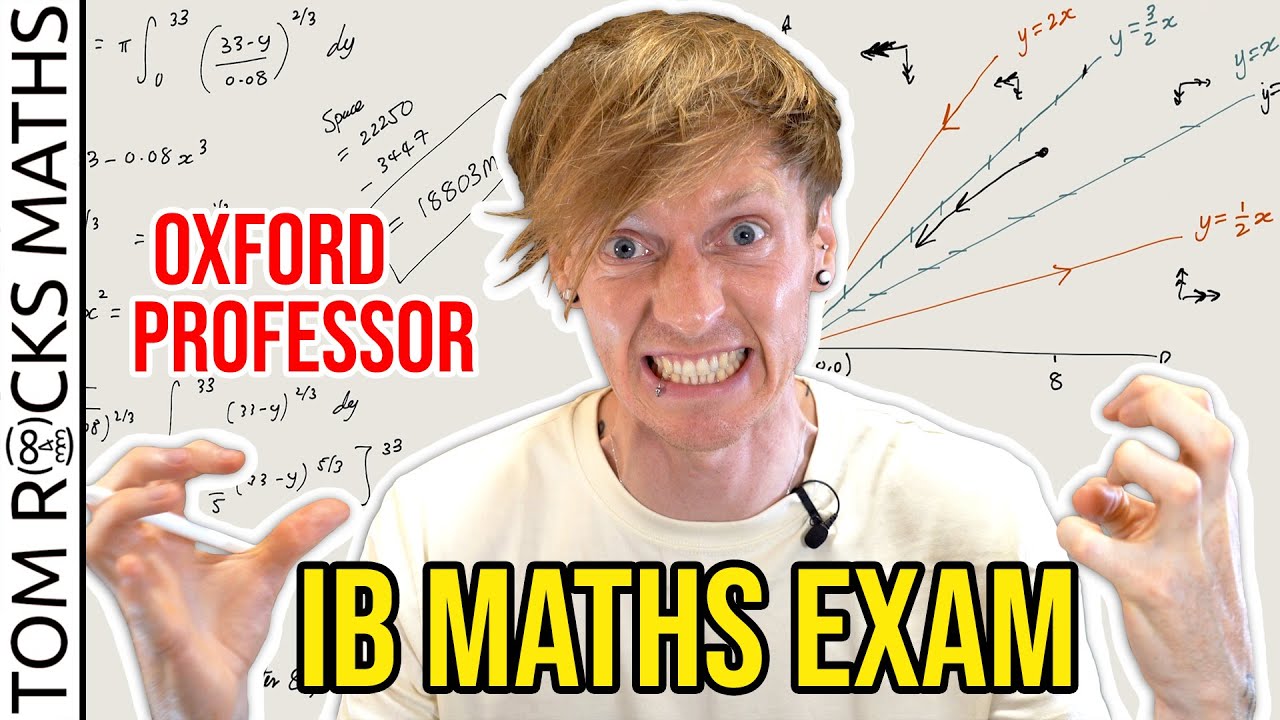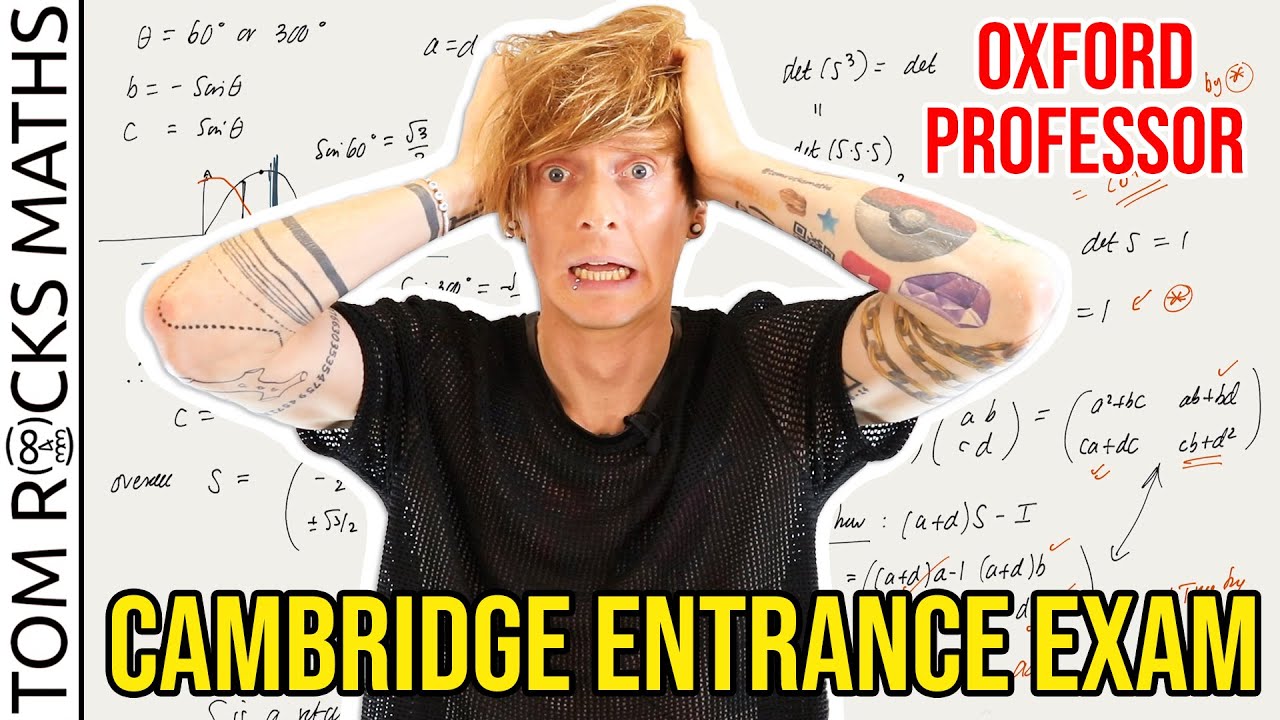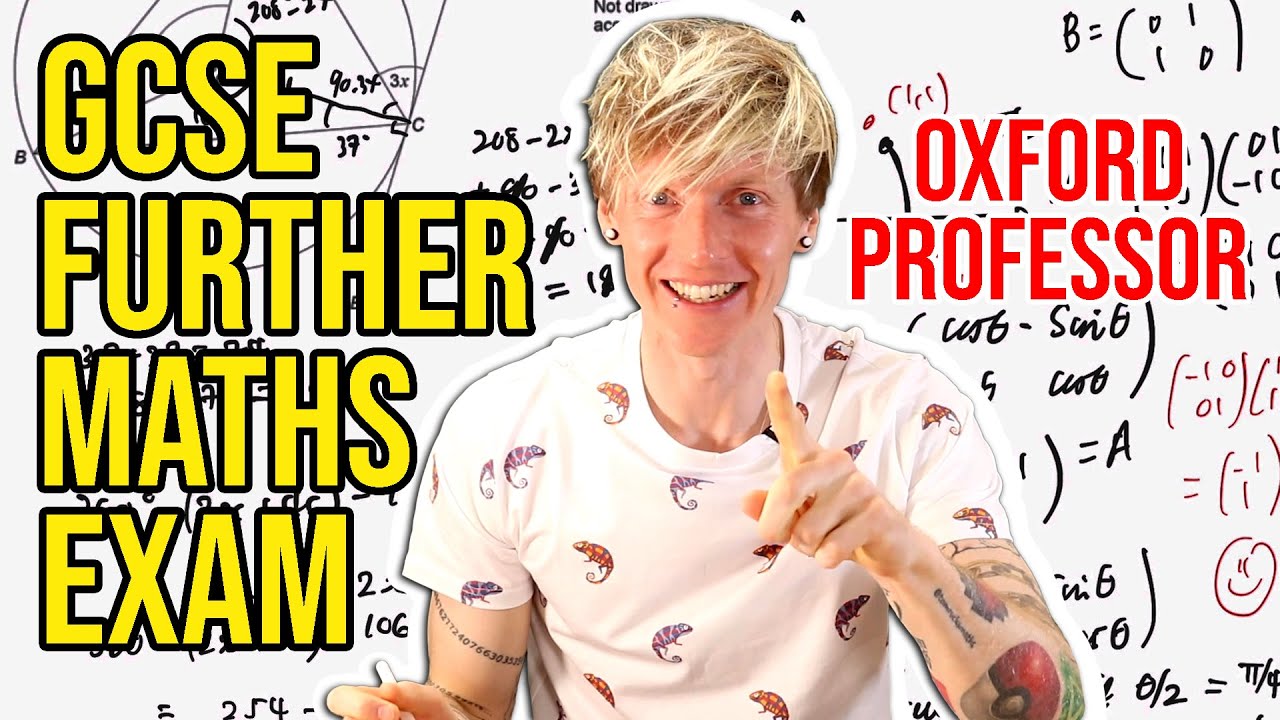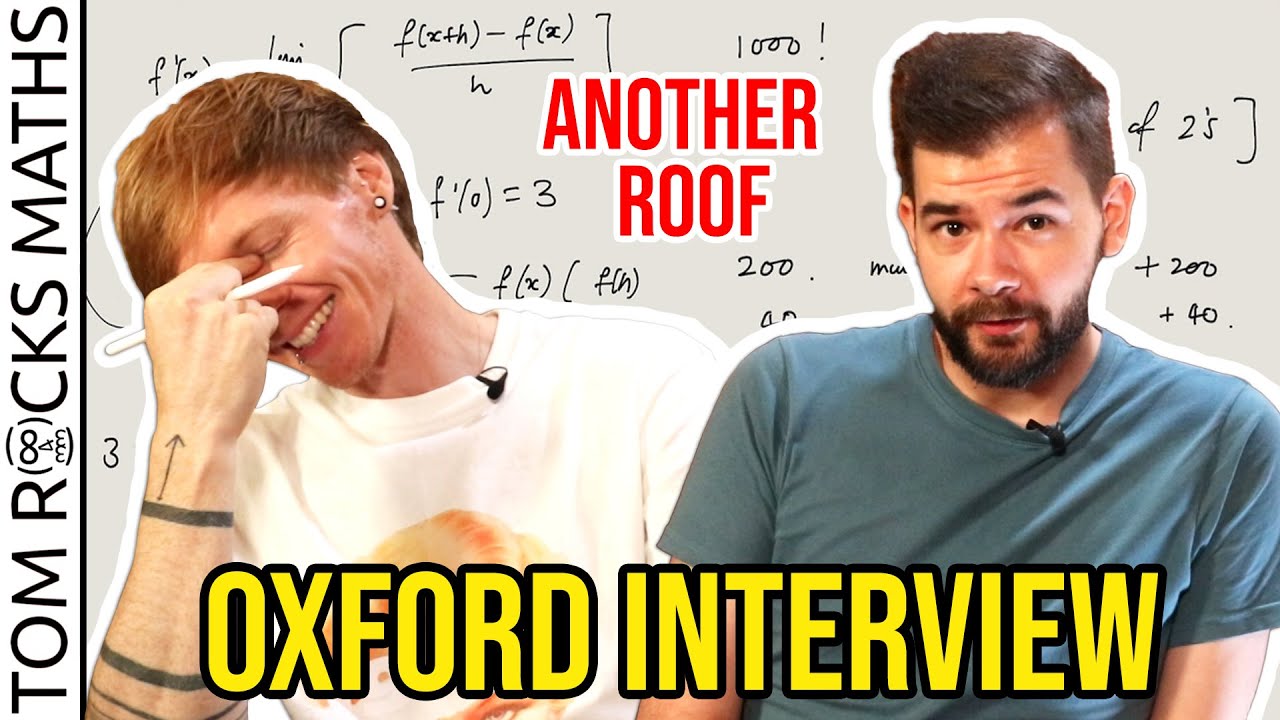Can ChatGPT Pass the Oxford University Admissions Test?
TLDRIn an intriguing experiment, Dr. Tom Crawford from the University of Oxford challenges an AI, Chat GPT, to take the Oxford Maths entrance exam, known as the MAT. The test is a critical component in the admissions process for undergraduate mathematics courses. The AI tackles a variety of questions, including geometry, calculus, and proofs, with mixed results. While Chat GPT demonstrates a strong understanding of mathematical concepts and executes complex proofs adeptly, it struggles with multiple-choice questions and tasks requiring visualization or graphical interpretation. The AI's performance is inconsistent, showing prowess in some areas but faltering in others, such as understanding certain questions or applying knowledge to non-numerical problems. Overall, the AI scores 48 out of 100, which Dr. Crawford deems insufficient to pass the Oxford maths admissions test. However, the exercise provides valuable insights into the capabilities and limitations of AI in mathematical reasoning and problem-solving.
Takeaways
- 🤖 Chat GPT attempted to take the Oxford Maths Admissions Test (MAT), which is a challenging exam for prospective undergraduate maths students at the University of Oxford.
- 📝 The test consists of multiple-choice questions and longer, non-multiple choice questions, with a maximum score of 100.
- 🎯 Chat GPT's performance was mixed, with some questions answered correctly using logical reasoning and mathematical calculations, while others were misunderstood or incorrectly answered.
- 📉 In the multiple-choice section, Chat GPT scored 12 out of 40, which was considered a weak performance.
- 📈 For the non-multiple choice questions, Chat GPT demonstrated stronger capabilities, particularly in questions that involved more descriptive, word-based input rather than purely mathematical expressions.
- 🔢 Chat GPT struggled with questions that required graphical or visual problem-solving, such as geometry questions, where it could not provide accurate sketches or visual representations.
- 🤔 The AI had difficulty with some logical inconsistencies, such as incorrectly assessing inequalities and misunderstanding certain mathematical concepts.
- 🧮 On questions involving proofs and logical deductions, Chat GPT showed a better understanding and was able to provide correct arguments and conclusions.
- 🌟 The final score for Chat GPT was 48 out of 100, which is below the average score typically required for admission to Oxford's maths program.
- 📚 Dr. Tom Crawford, a member of the admissions team at St Edmund Hall, part of the University of Oxford, conducted the experiment and provided insights into the evaluation process.
- 🔗 The video and any supplementary materials, such as the test paper and mark scheme, were made available for viewers to try the test themselves.
Q & A
What is the purpose of the Oxford Maths Admissions Test (MAT)?
-The MAT is an exam taken by all students applying for the undergraduate maths course at the University of Oxford. It plays a significant role in the decision-making process for admissions, although there isn't a specific pass mark.
How did Dr. Tom Crawford introduce the test to Chat GPT?
-Dr. Tom Crawford, a member of the admissions team at St Edmund Hall, introduced the 2021 version of the MAT to Chat GPT to see how it would perform on questions typically answered by human students.
What was the scoring system for the test taken by Chat GPT?
-The test included five questions with a maximum score of 100. The first question was multiple choice with ten parts worth four marks each, totaling 40 marks, and the remaining four questions were each worth 15 marks.
How did Chat GPT perform on the geometry question about a dodecagon?
-Chat GPT made an error in calculating the height of an isosceles triangle formed by dividing the dodecagon, leading to an incorrect answer. It received zero marks for this question.
What was the nature of the integral question that Chat GPT attempted to solve?
-The integral question involved evaluating the definite integral of x to the power of 1/2 from 0 to a, where 'a' is a certain value. Chat GPT made an algebraic error and did not arrive at the correct answer.
How did Chat GPT approach the question about tangents to a curve?
-Chat GPT attempted to find the equations of the tangents, their points of intersection, and evaluate given statements for truthfulness. It correctly identified one true statement but made errors in its calculations and assumptions.
What was the final score Chat GPT achieved on the Oxford Maths Admissions Test?
-Chat GPT scored 48 out of 100, which is considered below the average mark that would typically be seen on the MAT for Oxford admissions.
Why did Chat GPT struggle with the geometry question involving a cake?
-Chat GPT struggled with the geometry question because it involved visual elements and sketching, which the AI was unable to perform effectively. It also made errors in interpreting the area calculations for the slice of the cake.
What type of questions did Chat GPT perform better on?
-Chat GPT performed better on questions that were textually descriptive and involved logical or mathematical proofs, such as the question about polynomials and roots, and the question about triangular triples.
How did Dr. Tom Crawford evaluate Chat GPT's performance on the test?
-Dr. Tom Crawford evaluated Chat GPT's performance by comparing its answers to the official solutions and marking scheme for the MAT, providing feedback and corrections where necessary.
What was the general conclusion about Chat GPT's ability to pass the Oxford Maths Admissions Test?
-The general conclusion was that Chat GPT did not pass the Oxford Maths Admissions Test, as its score was below the average range for human students. However, the experiment was considered interesting and provided insights into the AI's capabilities.
Outlines
😀 Introduction to the Oxford Maths Admissions Test Challenge
Dr. Tom Crawford introduces the video's purpose: to determine if an AI, specifically chat GPT, can pass the Oxford Maths Admissions Test (MAT). The MAT is a challenging exam for prospective undergraduate maths students at the University of Oxford. The video outlines the structure of the test and Dr. Crawford's role in the admissions process. It also sets the stage for the AI's attempt at the 2021 version of the test, with a link to the test paper provided for viewers.
📚 Attempting the MAT: Geometry and Integration Questions
The video proceeds with chat GPT attempting the first multiple-choice question on geometry, involving the area of a dodecagon, and a follow-up integration problem. Despite a promising start with the geometry question, an error in calculation leads to an incorrect answer. The integration question also ends in an incorrect response after a misunderstanding in the algebraic manipulation. Both questions result in zero marks for chat GPT.
🧐 Analyzing Tangents and Vectors
Chat GPT tackles a question involving the properties of tangents to curves and a probability question about vectors. It correctly assesses a true statement among multiple choices regarding the tangents. However, it fails to provide the correct answer for the vector probability question, misunderstanding the setup and resulting in another zero mark.
🤔 Dealing with Polynomials and Curves
The AI encounters a question about the tangent to a curve and another about the area bounded by curves and the y-axis. It provides a sensible approach to finding the values of 'a' for the tangent question but incorrectly identifies the number of solutions. For the area question, it incorrectly applies the limits of integration and fails to find the correct answer, resulting in no marks for these questions as well.
😕 Struggling with Graphs and Sequences
Chat GPT faces difficulty with a graphing question, unable to plot the graph and select the correct one from the options provided. It also attempts a question about a sequence defined by a recurrence relation, providing incorrect assessments of the given statements. Both questions result in zero marks due to misunderstandings and incorrect conclusions.
🔢 Logarithmic Proofs and Inequalities
The AI tackles a question involving logarithmic statements and proves, showing a better understanding of the concepts. It uses Taylor expansions and logarithmic properties to provide answers, earning some marks for correct parts of the solution. However, it makes a critical error in applying the alternating series estimation theorem incorrectly, leading to zero marks for that part.
🍰 Geometry of Cake Cutting
Chat GPT faces a complex geometry question about cutting a cake, which it struggles with significantly. It fails to provide the correct formula for the area of a slice of cake and misunderstands the subsequent points on the cake that satisfy certain conditions. The inability to visualize and plot graphs hinders its performance, resulting in zero marks for this question.
📉 Incorrect Inequalities and Area Calculations
The AI attempts to describe a region defined by certain inequalities and to calculate the area of a slice after two cuts. It provides incorrect inequalities and misinterprets the conditions for the area calculation. Despite attempts to correct the process, chat GPT fails to provide the correct answers, resulting in zero marks for this section.
📈 Success with Polynomials and Turning Points
Chat GPT shows a better understanding when dealing with polynomials and their turning points. It correctly identifies the conditions for a polynomial to have turning points and provides a general expression for a polynomial with specific properties. The AI earns a decent score for this question by correctly interpreting the problem and applying the right mathematical concepts.
🤖 Mixed Results on the Final Questions
The AI experiences a mix of success and failure on the final questions. It provides a correct proof for a set of integers being a triangular triple and successfully calculates a formula for a specific case. However, it makes a mistake in calculating the value of a function for an odd integer and fails to use the correct formula for an even integer, resulting in lost marks. The final question about the function's value for a specific input is answered incorrectly, but the overall attempt shows a mix of understanding and error.
🏁 Conclusion and Final Assessment
After a thorough attempt at the MAT, chat GPT scores 48 out of 100. Dr. Crawford reflects on the AI's performance, noting that while some questions were tackled well, particularly those with detailed word explanations, others, especially those requiring visualization or graphing, were not handled effectively. The video concludes that chat GPT did not pass the Oxford maths admissions test but the experiment was insightful and engaging.
Mindmap
Keywords
💡Oxford maths entrance exam
💡Geometry
💡Definite integral
💡Tangent lines
💡Vectors
💡Trigonometric identities
💡Polynomials
💡Logarithms
💡MAT multiple-choice questions
💡Non-multiple choice questions
💡Admissions process
Highlights
Chat GPT attempted to pass the Oxford maths entrance exam, a significant test for undergraduate maths applicants at the University of Oxford.
The test consists of five questions with a total score of 100, including multiple-choice and open-ended questions.
Chat GPT's performance varied across different question types, with a maximum score of 48 out of 100.
The AI struggled with the first multiple-choice question on geometry, highlighting a potential misunderstanding of the problem.
In contrast, Chat GPT demonstrated a good understanding of calculus and algebra in later questions.
The AI's ability to handle word-based problems was better than its performance on visual or graphical tasks.
Chat GPT made critical errors in interpreting and solving a geometry question about a dodecagon.
The AI showed a strong grasp of mathematical logic and proof in the final question about triangular triples.
The admissions tutor, Dr. Tom Crawford, noted that while the AI's score was below average, it did not rule out the possibility of admission due to the holistic review process.
The experiment raised questions about the capabilities of AI in understanding and solving complex mathematical problems.
Chat GPT's score of 48 reflects a mixed performance, with notable successes in some areas and significant challenges in others.
The AI's incorrect assumptions led to missteps in solving mathematical problems, such as assuming certain variables should be zero.
Chat GPT demonstrated the ability to use the Pythagorean theorem and other mathematical concepts to find heights and areas in geometric problems.
The AI's performance on the series and logarithms question showed its capacity to manipulate mathematical expressions and apply theorems.
Dr. Crawford observed that Chat GPT's incorrect answers sometimes resulted from not understanding the question rather than a lack of mathematical knowledge.
The AI's attempt to plot graphs and use visual aids, although unsuccessful, showed an effort to approach problems that require visualization.
Chat GPT's approach to solving polynomial equations and finding turning points was analytically sound, yielding correct results.
The AI's final score on the test was a reflection of both its strengths in certain mathematical areas and its limitations in others.
Transcripts
Browse More Related Video

We Put ChatGPT and Three Other Math Apps to the Test - Here's What We Found!

Oxford University Mathematician takes High School IB Maths Exam

Oxford University Mathematician takes Cambridge Entrance Exam (STEP Paper) PART 1

Oxford University Mathematician takes High School GCSE Further Maths Exam

Oxford University Mathematician takes Admissions Interview (with @AnotherRoof)

Oxford University Mathematician takes American AP Calculus BC Math Exam
5.0 / 5 (0 votes)
Thanks for rating: